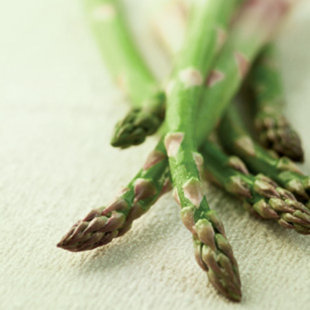Asparagus, that tender and vibrant vegetable adored by many, has a fascinating history filled with myths and misconceptions that have persisted over the years. From its mysterious effect on urine to its culinary versatility, let’s unravel the truth behind some of the most common asparagus myths and separate fact from fiction.
Asparagus, often hailed as the aristocrat of vegetables, carries with it a certain mystique that has given rise to a tapestry of myths and misconceptions throughout its history. This remarkable vegetable, with its slender, emerald spears and delicate flavor, has captivated both culinary enthusiasts and curious minds. Beyond its gastronomic appeal, asparagus has woven itself into intriguing tales that range from curious folklore to culinary legends. Let’s embark on a journey to peel back the layers of myths and explore the realities that make asparagus a subject of fascination and delight.
**1. Myth: Asparagus Makes Your Urine Smell Funny: Fact: The curious phenomenon of “asparagus pee” has puzzled and intrigued many. While it’s true that some individuals detect a distinct odor in their urine after consuming asparagus, not everyone experiences this olfactory oddity. Scientific research has shed light on this mystery, revealing that asparagus contains sulfur compounds that, when digested, produce specific volatile molecules. These molecules are excreted through urine, leading to the peculiar scent. It’s an interesting quirk but certainly nothing to be alarmed about.
**2. Myth: Thin Asparagus is More Tender than Thick Asparagus: Fact: The thickness of asparagus does not singularly determine its tenderness. The age and freshness of the spears are key factors. While thin asparagus is often associated with tenderness, thick spears can be just as tender if they are young and fresh. Cooking method and duration play a crucial role in achieving tender asparagus, regardless of its thickness.
**3. Myth: Asparagus Can Only be Green: Fact: The world of asparagus is far more colorful than many realize. While green asparagus is the most commonly found variety, it shares the stage with white and purple asparagus. White asparagus is grown in darkness to prevent chlorophyll development, resulting in its pale color and slightly different taste. Purple asparagus, on the other hand, boasts a striking hue due to the presence of anthocyanin pigments. Each variety has its unique flavor profile, adding a spectrum of choices to culinary adventures.
**4. Myth: Asparagus Should Always be Peeled: Fact: The decision to peel asparagus hinges on various factors, primarily the age and thickness of the spears. Young and thin asparagus typically have tender skin that does not require peeling. In contrast, thicker or more mature asparagus may have tougher or fibrous skin near the base, making peeling advisable. Ultimately, the choice to peel or not depends on personal preference and the specific culinary application.
**5. Myth: Asparagus Can Only be Cooked One Way: Fact: Asparagus is a culinary chameleon, adapting to various cooking methods and styles. While steaming and roasting are classic approaches, you can also grill, sauté, boil, blanch, or even enjoy it raw in salads. Its versatility extends to countless culinary creations, from soups and risottos to stir-fries and quiches. Asparagus invites experimentation and creativity in the kitchen.
**6. Myth: Asparagus is a “Superfood”: Fact: While asparagus is undeniably nutritious and packed with vitamins, minerals, and dietary fiber, it’s not a magical cure-all. The term “superfood” is often applied loosely to foods with exceptional nutrient profiles, but no single food can provide all the nutrients the body needs. Asparagus is a valuable part of a balanced diet, contributing to overall health and well-being.
In conclusion, the world of asparagus is a fascinating blend of culinary delight and intriguing myths. By unraveling these myths and embracing the realities, we can fully appreciate the rich tapestry of history and culture that surrounds this remarkable vegetable. So, whether you savor asparagus for its flavor, its nutritional benefits, or the charming quirk of “asparagus pee,” let it continue to enchant your culinary journey.
To delve further into this matter, we encourage you to check out the additional resources provided here: Untitled

Asparagus Makes Your Urine Smell Funny: Fact: This is perhaps the most well-known asparagus myth. It’s true that after consuming asparagus, some people notice a distinct odor in their urine. However, not everyone experiences this, and it’s due to a combination of factors. Asparagus contains sulfur compounds that break down during digestion, producing volatile molecules. These molecules are expelled through urine and can create a unique odor. While it may be noticeable to some, it’s harmless and not a cause for concern.
The curious phenomenon of “asparagus pee” has perplexed and amused people for generations. While it might seem like a peculiar quirk, the science behind it is quite straightforward, shedding light on the intriguing interplay between food, our bodies, and our senses.
Asparagus contains sulfur compounds, most notably mercaptans, that are responsible for the distinctive odor. When you consume asparagus, these compounds undergo a transformation during digestion. They break down into smaller, more volatile molecules, some of which are sulfur-containing. These volatile molecules, now in a gaseous form, are expelled from the body through urine.
Here’s where the fun part (or perhaps the slightly odd part) comes into play: the unique odor. Some individuals have a heightened sensitivity to these sulfur-derived compounds, making them more likely to detect the resulting aroma in their urine. However, it’s important to note that not everyone experiences this phenomenon. Genetics plays a significant role in determining whether you’re sensitive to the scent or not.
Importantly, “asparagus pee” is entirely harmless. It might be surprising or even amusing, but there’s no cause for concern. The odor doesn’t indicate any health issues or problems with your asparagus consumption. In fact, it’s a harmless reminder of the complexity of our bodies and how they interact with the foods we eat.
Asparagus, with its unique blend of nutrients and flavors, continues to surprise and intrigue us, not just with its taste but also with its curious effects on our senses. So, the next time you enjoy a plate of delicious asparagus, you can appreciate both its culinary appeal and the fascinating chemistry that it brings to the table.
To delve further into this matter, we encourage you to check out the additional resources provided here: 11 Misconceptions About Plant-Based Eating You Shouldn’t Believe …

Thin Asparagus is More Tender than Thick Asparagus: Fact: The tenderness of asparagus is not solely determined by its thickness. Thicker spears tend to be more mature and have a slightly woodier texture near the base, but they can still be tender if cooked properly. The key to tender asparagus is freshness and cooking method. Young, fresh asparagus, whether thin or thick, can be tender if cooked quickly, while older asparagus may benefit from peeling or more extended cooking times.
Thin Asparagus is More Tender than Thick Asparagus: Fact: The tenderness of asparagus is not solely determined by its thickness. Thicker spears tend to be more mature and have a slightly woodier texture near the base, but they can still be tender if cooked properly. The key to tender asparagus is freshness and cooking method. Young, fresh asparagus, whether thin or thick, can be tender if cooked quickly, while older asparagus may benefit from peeling or more extended cooking times.
It’s important to recognize that asparagus thickness is not a definitive measure of tenderness. While thin asparagus is often celebrated for its delicacy and tenderness, thicker spears should not be dismissed. They offer a unique flavor and texture profile that can be just as enjoyable with the right approach.
Thicker asparagus spears typically have a more pronounced flavor and a slightly heartier bite near the base. This isn’t a drawback; it’s a characteristic that can be appreciated when paired with the right dishes. When cooking thicker asparagus, consider peeling the lower portion if it appears tough. This simple step can significantly enhance the overall tenderness, allowing you to enjoy the entire spear without any woody texture.
However, the ultimate secret to tender asparagus, regardless of its thickness, is freshness and the cooking method employed. Young, fresh asparagus, whether thin or thick, will almost always be tender when cooked properly. The key is not to overcook it. Whether you choose to roast, grill, steam, or sauté, the cooking time should be minimal. Overcooking will lead to a mushy, undesirable texture, which is a risk for both thin and thick asparagus.
For older or thicker asparagus, where the base might be woodier, consider using a vegetable peeler to remove the tougher outer layer. This can make a significant difference in the overall eating experience. Additionally, longer cooking times, such as braising or slow-roasting, can soften the fibrous parts of thicker spears, rendering them tender and delicious.
In summary, the idea that thin asparagus is inherently more tender than thick asparagus is a partial truth. While thin spears are often naturally tender, thicker ones can be just as delightful with a little extra care. The real key to achieving tenderness with asparagus lies in its freshness and your chosen cooking method. Whether thin or thick, embrace the unique qualities of asparagus and adapt your approach accordingly to savor its exquisite flavors and textures.
If you’d like to dive deeper into this subject, there’s more to discover on this page: The Truth About Omega 3 in Bacon: Debunking the Myths- Nao …

Asparagus Can Only be Green: Fact: While green asparagus is the most common variety, asparagus comes in various colors, including white and purple. White asparagus is grown underground to prevent exposure to sunlight, which gives it its pale color and slightly milder taste. Purple asparagus, on the other hand, contains anthocyanin pigments, which give it its distinctive hue. Each variety has its unique flavor and culinary uses.
“Contrary to the misconception that asparagus can only be green, the world of asparagus offers a spectrum of colors, each with its own intriguing story and culinary allure. Let’s explore these colorful variations:
Green Asparagus: Undoubtedly the most familiar, green asparagus is celebrated for its fresh, grassy flavor and vibrant hue. Its robust taste makes it a versatile ingredient that shines in a variety of dishes, from grilled asparagus spears to vibrant salads and stir-fries.
White Asparagus: This delicate cousin of green asparagus is cultivated differently. White asparagus is grown underground, shielded from sunlight, which prevents chlorophyll development. The absence of sunlight imparts its characteristic pale color and a slightly milder, nuttier flavor. It’s a prized delicacy in many European cuisines, often featured in creamy soups and elegant gratins.
Purple Asparagus: Nature’s artistry reveals itself in purple asparagus, which boasts a stunning violet hue. This variety owes its color to anthocyanin pigments, which also contribute to its unique, subtly sweet taste. Beyond its visual appeal, purple asparagus contains antioxidants associated with potential health benefits. It’s particularly delightful when lightly steamed or roasted to preserve its vibrant color.
Wild Asparagus: In some regions, wild asparagus varieties thrive in their natural habitats. These can range in color from green to purple and even pink. Wild asparagus often has a more intense flavor and a thinner, more fibrous texture compared to cultivated varieties. Foragers and adventurous food enthusiasts may seek out these unique specimens.
Combined Culinary Palette: The beauty of these asparagus variations lies in their ability to elevate culinary experiences. Green asparagus adds vibrancy and a touch of earthiness to dishes, white asparagus brings elegance and a subtle sweetness, while purple asparagus introduces a captivating visual and flavor contrast. Chefs and home cooks alike appreciate this rich palette of flavors and colors for creative presentations.
Nutritional Nuances: While the nutritional profiles of these asparagus varieties share many common attributes, they each offer unique compounds associated with their colors. For example, purple asparagus contains anthocyanins, which are antioxidants linked to potential health benefits, while green asparagus is rich in chlorophyll and folate.
In conclusion, the belief that asparagus can only be green is a culinary myth dispelled by a vibrant array of hues and flavors. Each asparagus variety, from green to white and purple, contributes to the culinary landscape with its distinct personality. Exploring the world of asparagus in all its colors invites us to savor the diversity of nature and adds an artistic touch to our dining experiences. So, whether you’re seeking a classic taste or a captivating visual feast, the colorful world of asparagus is ready to delight your palate.”
Looking for more insights? You’ll find them right here in our extended coverage: 11 Misconceptions About Plant-Based Eating You Shouldn’t Believe …

Asparagus Should Always be Peeled: Fact: Peeling asparagus is not a universal requirement. It depends on the thickness and age of the spears. Thin, young asparagus typically does not require peeling, as the skin is tender. Thicker or more mature asparagus may benefit from peeling, especially near the base, to remove any tough or fibrous parts. Ultimately, peeling is a matter of preference.
The notion that asparagus should always be peeled is a culinary myth that warrants clarification. In reality, whether or not you peel asparagus depends on various factors, primarily the thickness and age of the spears.
For thin, young asparagus, peeling is generally unnecessary. The skin on these tender spears is delicate and doesn’t pose a textural or flavor concern. In fact, leaving the skin intact can enhance the visual appeal of the dish, as it contributes to the vibrant green color that asparagus is celebrated for.
However, asparagus comes in various sizes, and the thicker or more mature spears can present a different culinary experience. While they offer a robust, earthy flavor, they may also have tougher or fibrous parts, particularly near the base. In such cases, peeling becomes a valuable option. Removing the tougher outer layer can improve the overall texture and tenderness of the spears, ensuring a more enjoyable dining experience.
Ultimately, whether or not you choose to peel asparagus is a matter of personal preference and the specific dish you’re preparing. Some recipes may benefit from the added tenderness and visual appeal of peeled asparagus, while others may highlight the natural beauty and flavor of the skin.
The key takeaway here is that there’s no universal rule dictating that all asparagus must be peeled. Instead, it’s a nuanced decision to be made based on the individual characteristics of the spears and your culinary goals. By understanding these considerations, you can confidently prepare asparagus dishes that showcase the vegetable in its best light, whether peeled or unpeeled, and debunk the myth that peeling is an absolute requirement.
Additionally, you can find further information on this topic by visiting this page: The Truth About Omega 3 in Bacon: Debunking the Myths- Nao …

Asparagus Can Only be Cooked One Way: Fact: Asparagus is incredibly versatile and can be prepared in various ways. While steaming and roasting are popular methods, you can also grill, sauté, boil, or even blanch it. Asparagus is a fantastic addition to salads, pasta dishes, and stir-fries. Its adaptability allows it to shine in a wide range of culinary creations.
Asparagus Can Only be Cooked One Way: Myth Debunked!
Contrary to the notion that asparagus can only be cooked in one way, it is, in fact, an incredibly versatile vegetable with a multitude of cooking possibilities. While steaming and roasting are indeed popular methods that enhance its unique flavor and texture, the culinary potential of asparagus extends far beyond these two techniques.
For those who appreciate the smoky char of the grill, asparagus can be a delightful addition to your barbecue repertoire. Grilling imparts a slightly smoky flavor and beautiful grill marks, transforming this green spear into a savory delight.
Sautéing asparagus in a bit of olive oil or butter offers a quick and flavorful option. The high heat caramelizes the sugars in the asparagus, adding a rich and slightly nutty taste to the dish.
Boiling or blanching asparagus, if done correctly, can preserve its vibrant green color and crispness. These methods are ideal for recipes where you desire the asparagus to retain its fresh, crunchy bite.
Asparagus also excels as a versatile ingredient in a variety of dishes. Toss it into a crisp salad for an added crunch, mix it into creamy pasta for a delightful contrast, or stir-fry it with your favorite vegetables and protein for a nutritious and flavorful addition to your meal.
The adaptability of asparagus knows no bounds, making it a shining star in the world of culinary creativity. So, next time you’re tempted to think of asparagus as a one-trick pony, remember that it’s a versatile green powerhouse ready to elevate your dishes in countless ways. Don’t be afraid to experiment and discover your favorite preparation method to make asparagus the star of your plate.
For additional details, consider exploring the related content available here The Truth About Omega 3 in Bacon: Debunking the Myths- Nao …

Asparagus is a “Superfood”: Fact: While asparagus is undeniably nutritious, it’s not a miracle “superfood.” It’s a healthy vegetable rich in vitamins, minerals, and fiber, making it a valuable addition to a balanced diet. However, no single food can provide all the nutrients the body needs, and a diverse diet is essential for overall health.
The idea that asparagus is often touted as a “superfood” is a common misconception, and it’s crucial to clarify its place in a well-rounded, healthy diet:
Balancing the Superfood Hype: In the era of superfood trends, it’s easy for individual foods to gain superstar status, with claims of miraculous health benefits. While asparagus is undoubtedly a nutritious vegetable, it’s vital to strike a balance between celebrating its attributes and maintaining realistic expectations. No single food possesses all the properties needed to qualify as a “superfood.”
The Nutrient Profile: Asparagus has much to offer in terms of nutrition. It’s a low-calorie vegetable that’s high in essential vitamins like folate, vitamin K, and vitamin C. It also provides dietary fiber, which supports digestive health, and is a source of antioxidants that help combat oxidative stress. These qualities make it a valuable component of a health-conscious diet.
Complementing a Diverse Diet: It’s important to remember that optimal nutrition relies on dietary diversity. A balanced diet includes a variety of foods from different food groups. While asparagus contributes certain nutrients, such as folate and fiber, it shouldn’t be relied upon as the sole source of these nutrients. Instead, it should be part of a broader palette of foods that collectively meet the body’s nutritional needs.
The Power of Variety: The key to good health is embracing dietary variety. Different foods offer unique sets of nutrients and health benefits. For instance, leafy greens like spinach and kale are rich in iron and calcium, while fruits like berries are packed with antioxidants. By incorporating a wide range of foods into your diet, you ensure that your body receives the full spectrum of nutrients required for optimal functioning.
A Holistic Approach: Rather than seeking a single “superfood” to fulfill all your nutritional requirements, adopt a holistic approach to nutrition. Focus on creating balanced meals that incorporate a colorful array of vegetables, lean proteins, whole grains, and healthy fats. This approach not only supports overall health but also makes eating an enjoyable and diverse experience.
Moderation and Lifestyle: Equally important as dietary variety is the concept of moderation and a healthy lifestyle. A nutritious diet should be complemented by regular physical activity, adequate hydration, and other lifestyle choices that promote well-being. It’s the combination of these factors that contributes to a healthy and vibrant life.
In conclusion, while asparagus is an excellent addition to a nutritious diet, it’s not a magic bullet or a “superfood” capable of addressing all your nutritional needs. The true power of nutrition lies in embracing dietary diversity, moderation, and a holistic approach to health that encompasses not only what you eat but also how you live. Asparagus, along with a colorful array of foods, plays a valuable role in achieving a balanced and fulfilling diet that promotes overall well-being.
If you’d like to dive deeper into this subject, there’s more to discover on this page: The Truth About Omega 3 in Bacon: Debunking the Myths- Nao …

In conclusion, asparagus is a delightful vegetable with a rich history, but it’s not immune to myths and misconceptions. By separating fact from fiction, we can fully appreciate this versatile and nutritious ingredient in our culinary adventures. So, whether you enjoy it for its flavor, its health benefits, or its intriguing effect on your urine, rest assured that asparagus is a delightful addition to your plate.
In summary, asparagus stands as a testament to the fascinating world of culinary wonders, boasting a rich history that’s interwoven with myths and misconceptions. By taking a closer look and discerning fact from fiction, we can truly embrace and savor this remarkable vegetable in all its glory.
Asparagus is more than just a side dish; it’s a versatile and nutritious ingredient that can elevate our culinary adventures to new heights. Its distinct flavor, tender texture, and vibrant color make it a favorite among chefs and home cooks alike. Beyond its culinary appeal, asparagus offers a wealth of health benefits, from being a source of essential vitamins and minerals to aiding in digestive health and supporting our overall well-being.
And yes, the curious phenomenon of “asparagus urine” is indeed a quirk of this vegetable. While it may lead to some interesting discussions, it’s a harmless and unique aspect of enjoying asparagus. Rest assured that any temporary changes in the odor of your urine are not a cause for concern but rather a reminder of the delightful addition you’ve made to your plate.
So, whether you’re savoring asparagus for its delectable taste, its nutritional value, or even its amusing effects, you can do so with confidence. Asparagus is a culinary gem that enriches our meals and our understanding of the world of food. As you continue to explore the diverse ways to prepare and enjoy this vegetable, you’ll find that it adds a touch of elegance and intrigue to your culinary creations, making every meal a delightful journey of flavor and discovery.
To expand your knowledge on this subject, make sure to read on at this location: Brood X cicadas: Time to bust some misunderstood facts insect

More links
Don’t stop here; you can continue your exploration by following this link for more details: Bacon Facts: 10 Surprising Tidbits You Need to Know for Your Next …
